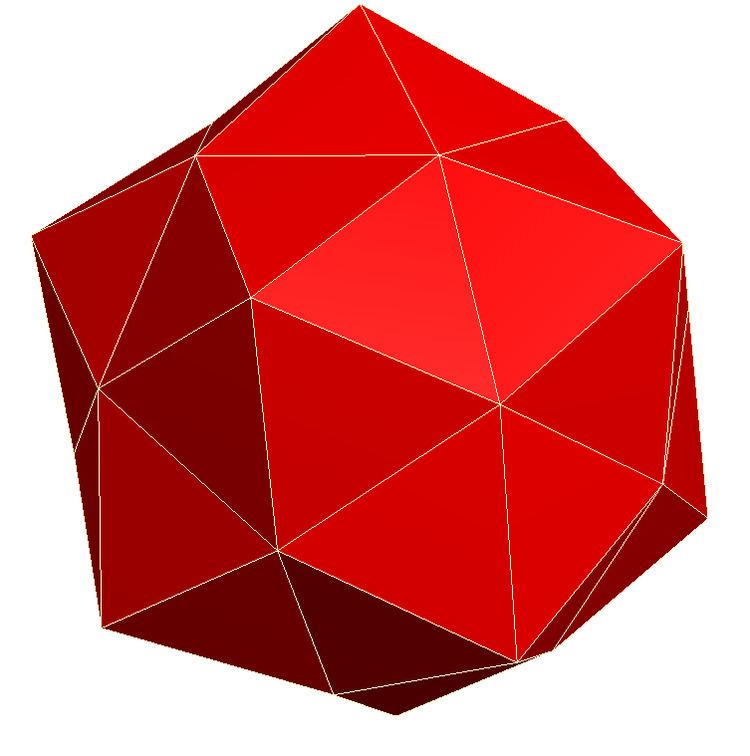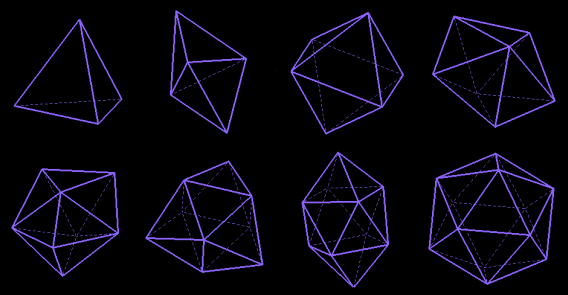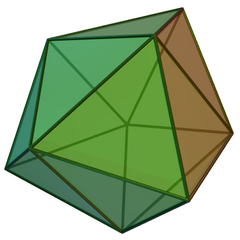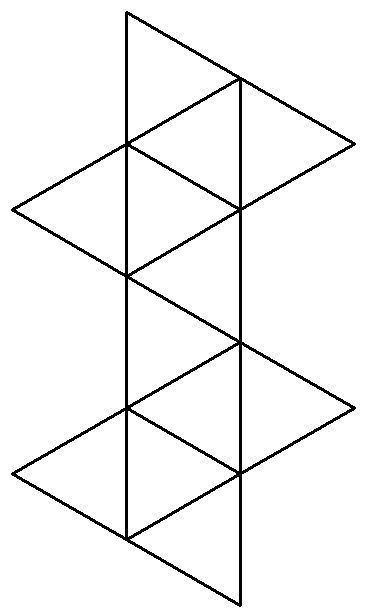 | ||
glitch hop undertale ost asgore deltahedron remix free download
In geometry, a deltahedron (plural deltahedra) is a polyhedron whose faces are all equilateral triangles. The name is taken from the Greek majuscule delta (
Contents
- glitch hop undertale ost asgore deltahedron remix free download
- hard dance undertale ost megalovania deltahedron remix free download
- The eight convex deltahedra
- Non strictly convex cases
- Non convex forms
- Additional reading
- References

hard dance undertale ost megalovania deltahedron remix free download
The eight convex deltahedra
There are only eight strictly-convex deltahedra: three are regular polyhedra, and five are Johnson solids.

In the 6-faced deltahedron, some vertices have degree 3 and some degree 4. In the 10-, 12-, 14-, and 16-faced deltahedra, some vertices have degree 4 and some degree 5. These five irregular deltahedra belong to the class of Johnson solids: convex polyhedra with regular polygons for faces.

Deltahedra retain their shape, even if the edges are free to rotate around their vertices so that the angles between edges are fluid. Not all polyhedra have this property: for example, if you relax some of the angles of a cube, the cube can be deformed into a non-right square prism.
There is no 18-faced convex deltahedron. However, the edge-contracted icosahedron gives an example of an octadecahedron that can either be made convex with 18 irregular triangular faces, or made with equilateral triangles that include two coplanar sets of three triangles.
Non-strictly-convex cases
There are infinitely many cases with coplanar triangles, allowing for sections of the infinite triangular tilings. If the sets of coplanar triangles are considered a single face, a smaller set of faces, edges, and vertices can be counted. The coplanar triangular faces can be merged into rhombic, trapezoidal, hexagonal, or other equilateral polygon faces. Each face must be a convex polyiamond such as , , , , , , and , ...
Some smaller examples include:
Non-convex forms
There are an infinite number of nonconvex forms.
Some examples of face-intersecting deltahedra:
Other nonconvex deltahedra can be generated by adding equilateral pyramids to the faces of all 5 regular polyhedra:
Other augmentations of the tetrahedron include:
Also by adding inverted pyramids to faces:
